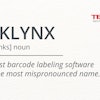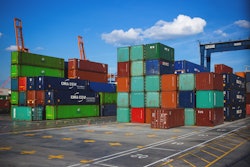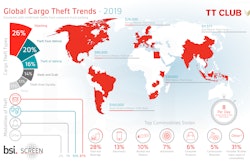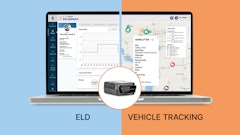
With many elements of production, procurement, inventory and delivery now digitized, companies have better visibility of their supply chains than ever before. Yet, it’s not quite 20/20 vision. For a clearer view of the many comings and goings of a supply chain, organizations should turn to edge computing.
Computing on the edge enables devices far away from cloud and on-premises servers to collect and analyze the massive amount of information that comes from the many diverse pieces of a supply chain. Collecting all of that data in real time and processing it through automated, artificial intelligence (AI)-supported applications should give companies the near-perfect vision they’ve long sought.
Over the years, as organizations have tried to adopt a true supply network philosophy – essentially, implementing a series of small supply chain processes that connect to one another and create a big picture—they have discovered a range of technological shortcomings and procedural gaps that weren’t previously evident. Until these challenges are addressed, a supply chain may continue to have disconnects where parts, packages and promises can fall between the cracks. A supply chain, after all, is only as strong as the weakest link.
The accelerating development and deployment of edge computing should strengthen those weak links and properly advance modernization. While not guaranteeing perfection, a free flow of data from technologies such as IoT sensors and autonomous robots, and the rapid processing of that data, can help companies better predict and manage the many elements of a supply chain.
The low latency of 5G technology should particularly bolster computing on the edge and, in turn, the real-time visibility and management of supply chains. 5G is poised to provide the necessary bandwidth to improve the connectivity of sensors and devices that are far removed from centralized computing servers or even those near one another in a manufacturing facility, allowing companies to make efficient use of the streams data coming out of those devices
Empowered on a supply chain’s edge
Edge computing is what it sounds like: processing data closer to the application and user, on the “edge” of activity, rather than transmitting massive amounts of data to a cloud or on-premises data center for processing. By narrowing the distance and reducing the movement of data, edge computing accelerates the larger computing process—lessening the probability of security events, introducing time and cost efficiencies and giving companies data insights in real time. Time is, of course, money. And in many industries and applications, milliseconds can really make a difference.
The recent proliferation of affordable, smarter mobile and IoT devices, as well as the maturity of AI-supported applications, has led to an increase in edge computing. That trend shows no signs of slowing. According to Gartner, the amount of enterprise data that will be produced and processed outside of traditional data centers is expected to leap from 10% today to 75% percent by 2025.
5G will enable edge computing to reach its full potential. The lower latency and higher connection density promised by 5G wireless networking holds that there’s no distance too great and no device too small to escape the reach of this enhanced connectivity.
For supply chains, this promise means there should be little limit to the number and types of devices or sensor-affixed objects that can be connected to one another and, ultimately, a supply chain control tower. That’s because low latency will improve the ability of devices to receive and send data, which will give companies real-time visibility of a supply chain and allow them to manage it in the moment.
That is, if they want to manually manage it. Because real-time data is bi-directional – sent and collected at once – this immediacy could someday support a new level of automation, even for time-critical processes. An uninterrupted flow of real-time information should enable a supply chain control tower to autonomously manage goods and processes, guiding a supply chain to act quickly and smartly.
Connectivity leads to insights and agility
Typically, the larger the supply chain, the more difficult it is to monitor and manage. For years, the limitations of supply chain technology narrowed the information it could deliver, which lessened visibility and complicated management. This forced companies to take large-scale actions to solve small problems, often creating an unnecessary wave that rippled across other supply chain processes.
The power of 5G should effectively shrink supply chains and make them easier to monitor and manage. With agile and adaptable supply chain processes, companies can start making measured and focused decisions that address specific issues. For that matter, they won’t need to sweat out difficult decisions; the technology can do it all on its own.
Whether on a factory floor or in a warehouse, companies can automate even time-critical supply chain processes. These automated processes, when supported by machine learning and other AI-driven applications, can predict, simulate and optimize outcomes, lessening the need for central management and reducing the ineffectiveness of ad-hoc human decisions.
For example, even if key decisions have already been made by human managers, an autonomous, intelligent supply chain could tweak the scheduling of sales and deliveries if it sees that a shipment bound for Tulsa is stuck in a container in a Seattle shipyard. This ability to self-adapt can extend down to retail store shelves. A transparent and self-managing supply chain could allow stores to properly address the potential shortage of rock salt with an ice storm on the horizon.
Edge computing and 5G also open the door to wider adoption of blockchain. With blockchain, a supply chain can move beyond the limitations of a peer-to-peer network, or even a one-source-to-many network. Blockchain creates a level of visibility between every partner on a supply chain and effectively holds them all accountable for their end of a production bargain.
Blockchain lets companies understand and vouchsafe the provenance of goods and materials. A retailer could scan a smartphone box and see where its many parts were made and place the product on the shelf knowing the company can stand by its claim of ethical trade.
One example is the IBM Food Trust, a collaborative network of growers, processors, wholesalers, distributors, manufacturers, retailers and others, enhancing visibility and accountability across the food supply chain. Built on IBM blockchain, this solution connects participants through a permissioned, immutable and shared record of food provenance, transaction data, processing details, and more.
Fair trade and ethics now carry great weight in commerce, as consumers look to do business with only companies that abide by their expectations and standards. A supply chain that shows the where, why, how and when of a product can give companies a decided edge on fair trade.
React faster with an intelligent, self-sufficient supply chain
A lot happens on the edge of a supply chain – and a lot could go wrong. By digitally connecting and automating the processes of the edge, organizations can extend the reach and visibility of their supply chains by dividing processes into sets of smaller, more manageable actions. Backed by AI and automated tools, the insight and foresight taken from the edges of supply chains will let companies quickly read and react to market conditions, see long-term trends before competitors and adjust strategies right down to the local level.
An intelligent, flexible supply chain leaves no link uncoupled and no bit of data alone.



















